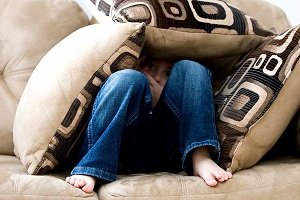How to Get Rid of Cyclothymic disorder
TweetCyclothymia is a milder form of manic depression, characterized by hypomania (a mild form of mania) alternating with mild bouts of depression. Cyclothymia is a mood disorder in which the client displays the characteristic ups and downs (depressions and euphorias) of Bipolar Disorder, to a much lower extent, to the point of not qualifying for a diagnosis of Bipolar Disorder.
Cyclothymia Collective:
There is a risk of 15%-50% that a person with cyclothymia will eventually develop bipolar disorder. Cyclothymia is a known risk factor for developing bipolar disorder. However, little is known about what factors determine which people with cyclothymia will develop bipolar disorder, or about the mechanisms involved in the change from cyclothymia to the more severe illness. Findings from the study will help clarify the role of various psychosocial factors in the course of cyclothymia and in the initial onset and subsequent course of full-blown bipolar disorder; help explain the relationship between unipolar major depression and the depressive phases of bipolar disorder; and suggest new methods for treating and preventing bipolar disorder. Know more on Bipolar Disorder and Cyclothymia.
Diagnosis for Cyclothymia:
For cyclothymia to be diagnosed, hypomanic symptoms and depressive symptoms must be present alternately for at least two years. Mood swings seem to occur frequently in people with cyclothymia -- the switch from depression to hypomania and back again may occur every few days or weeks -- even every few hours in extreme cases! Mood swings are consistent; a person with cyclothymia is never symptom-free for longer than two months.
Causes of Cyclothymia
The causative factors are the genetic factors. Many of the affected persons have a family history of major depression, suicide or alcohol/drug dependencies.
Cyclothymia symptom - What are the Symptoms of Cyclothymia?
Many cyclothymic disorder patients have difficulty succeeding in their work or social lives since their unpredictable moods and irritability create a great deal of stress, making it difficult to maintain stable personal or professional relationships. Like Bipolar II Disorder, symptoms of cyclothymia include periods of hypomania.
Depressive symptoms are also present in Cyclothymia as the hypomania fades. These symptoms, however, does not meet the criteria for a major depressive episode. In other words the symptoms of cyclothymia are not as severe as those found in Bipolar Disorder.
Adolescents and Cyclothymic disorder
Findings from one NIMH-supported study suggest that the illness may be at least as common among youth as among adults. In this study, 1 percent of adolescents ages 14 to 18 were found to have met criteria for bipolar disorder or cyclothymia in their lifetime. In addition, close to 6 percent of adolescents in the study had experienced a distinct period of abnormally and persistently elevated, expansive, or irritable mood even though they never met full criteria for bipolar disorder or cyclothymia.
Cyclothymic disorder treatment - What are the Treatment for Cyclothymia?
There is no clear treatment of choice for this disorder. Cyclothymia is treated similarly to bipolar disorder. A combination of antimanic drugs, antidepressants, or psychotherapy can effectively treat this condition in many cases.
- Antidepressant Medication for Cyclothymia- A trial of lithium carbonate is often tried, especially if the mood swings seem to be similar to those found in bipolar disorder. Prescription of such a medication though should be dependent upon a thorough clinical examination and history of the patient. Get more on Cyclothymia treatment through Antidepressants.
- Psychotherapy for Cyclothymia- Psychological treatment often focuses on the life adjustment problems that develop because of the Cyclothymia, and in helping the individual recognize the onset of a Cyclothymia and take corrective action. Treatment often takes the form of individual psychotherapy, although group treatment can also be helpful for this disorder. Get more on Cyclothymia treatment through Psychotherapy.
- Self Help for Cyclothymia- Lifestyle improvements always have a positive impact, however can take more effort to actually do as the depression becomes more severe. Self-help methods for the treatment of this disorder are often overlooked by the medical profession because very few professionals are involved in them. Depression Self Help plays an important role in curing dysthymic disorder. It moves hand in hand with other depression treatments. Get more on Cyclothymia treatment through Self Help
Facts and Tips about Cyclothymic Disorder
- Cyclothymic disorder is a chronic form of bipolar disorder, another name is Cyclothymia.
- Cyclothymic disorder leads to the bipolar spectrum. Specifically, this disorder is a mild form of bipolar II disorder consisting of recurrent mood disturbances between hypomania and dysthymic mood.
- Cyclothymic disorder usually affect in early adulthood. More women than men have the disorder.
- Thare is no one exact causes of cyclothymia or bipolar disorder. Genetics play a role in the development of both these disorders.
- Extreme optimism, inflated self-esteem, poor judgment, rapid speech, racing thoughts, aggressive or hostile behavior, being inconsiderate of others, agitation, increased physical activity, risky behavior, spending sprees, increased drive to perform or achieve goals, decreased need for sleep these are some symptoms of this disorder.
- For treating this disorder medication can help the person with cyclothymic disorder to control symptoms and used psychotherapy.


Sometimes crying or laughing
are the only options left,
and laughing feels better right now.

Current Issue
 Self Help Leaflets Take the help of our self help leaflets or booklets. |
 The DG Magazine All about living with depression |


















